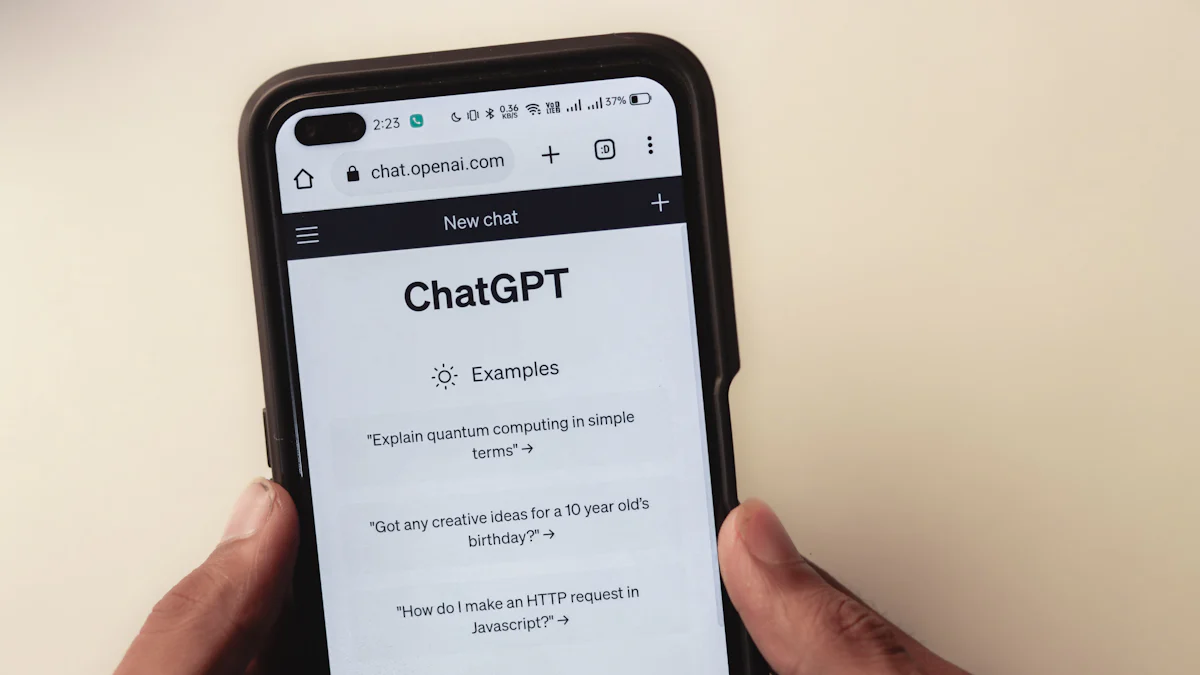8 Proven Chatbot Best Practices to Boost Conversions in 2024

Enhancing Chatbot Performance
In 2024, optimizing chatbot performance will be crucial for driving successful conversions. As technology continues to evolve, implementing effective chatbot strategies is essential in meeting the needs of users and enhancing overall customer experience. By focusing on chatbot best practices, businesses can improve engagement, increase sales, and foster stronger relationships with their audience.
Chatbot Optimization: Embracing the latest chatbot best practices is vital for businesses looking to stay ahead in 2024.
To achieve this, it's important to consider various aspects of chatbot design, messaging, personalization, keyword strategies, AI integration, as well as implementation insights. Each of these elements plays a significant role in ensuring that chatbots are not only functional but also provide value to users while driving conversions.
Design Optimization
In the realm of chatbot best practices, design optimization holds a pivotal role in ensuring seamless user interactions and driving conversions. By focusing on creating an intuitive and mobile-responsive design, businesses can significantly enhance the overall performance of their chatbots.
User-friendly Interface
Implementing a user-friendly interface is paramount to providing a positive experience for users engaging with the chatbot. A simple and intuitive design ensures that users can easily navigate through the chatbot's functionalities, leading to higher engagement and satisfaction.
Mobile Responsiveness
In today's digital landscape, mobile devices play a central role in how users interact with online platforms. Ensuring that the chatbot is optimized for mobile devices is crucial for reaching a wider audience. A mobile-responsive chatbot guarantees that users can seamlessly engage with the bot across various devices, thereby expanding its reach and impact.
By prioritizing these design elements, businesses can effectively optimize their chatbots to deliver exceptional user experiences while driving conversions.
Effective Messaging
Engaging Content
When it comes to chatbot best practices, crafting engaging content is paramount to capturing and retaining users' attention. Engaging content is not only compelling and relevant but also tailored to the specific needs and interests of the target audience. By integrating conversational language and a friendly tone, businesses can create a more personalized and enjoyable experience for users interacting with the chatbot.
The key to crafting engaging content lies in understanding the preferences and behaviors of the target audience. By leveraging data insights and user feedback, businesses can tailor their messaging to resonate with users effectively. Additionally, incorporating visual elements such as emojis or gifs can add a touch of creativity and liveliness to the conversation, further enhancing user engagement.
Call-to-Action
Incorporating clear and persuasive calls-to-action (CTAs) within chatbot conversations is essential for driving conversions. A well-crafted CTA prompts users to take specific actions, whether it's making a purchase, signing up for a newsletter, or exploring additional product offerings. By strategically placing CTAs throughout the conversation flow, businesses can guide users towards desired outcomes while maintaining a seamless and non-intrusive user experience.
Effective CTAs are concise, action-oriented, and aligned with the overall messaging tone of the chatbot. They should clearly communicate the value proposition while instilling a sense of urgency or exclusivity to prompt immediate action. Furthermore, A/B testing different CTAs can provide valuable insights into which messages resonate most effectively with users, enabling continuous optimization for improved conversion rates.
Personalization Impact
Personalization is a key aspect of chatbot best practices, allowing businesses to tailor their interactions with users based on individual preferences and behaviors. By personalizing responses and content, chatbots can create a more engaging and customized experience for each user.
User-Specific Responses
Tailoring chatbot responses based on user-specific data such as past interactions, purchase history, and preferences allows for a more personalized conversation. By leveraging this information, chatbots can provide relevant recommendations, answer queries specific to the user's interests, and create a sense of individualized attention. This level of personalization not only enhances user satisfaction but also increases the likelihood of driving conversions by offering tailored solutions.
Dynamic Content
Utilizing dynamic or personalized content within chatbot interactions adds an extra layer of engagement for users. This could include dynamically generated product recommendations based on browsing history, personalized messages addressing the user by name, or tailored content that aligns with the user's unique interests. By incorporating dynamic content, businesses can elevate the overall user experience while strengthening their brand-consumer relationships.
By integrating these personalization strategies into chatbot interactions, businesses can foster stronger connections with their audience and drive higher conversion rates.
Keyword Strategies
When it comes to optimizing chatbot performance, incorporating effective keyword strategies is essential for ensuring that the chatbot's content aligns with user queries and maximizes engagement. By strategically utilizing relevant keywords and long-tail keywords, businesses can enhance the effectiveness of their chatbots in delivering specific and valuable interactions.
Relevant Keywords
Incorporating targeted keywords into the chatbot's content is crucial for aligning with user queries and providing accurate responses. By identifying relevant chatbot keywords, businesses can ensure that the chatbot effectively addresses user inquiries while maintaining relevance to the overall conversation. This strategic use of keywords enhances the chatbot's ability to understand and respond to user needs accurately.
Long-Tail Keywords
In addition to relevant keywords, integrating long-tail keywords further refines the chatbot's interactions by catering to more specific user queries. Long-tail keywords are highly targeted phrases or search terms that capture the intent of users with greater precision. By incorporating long-tail keywords into the chatbot's vocabulary, businesses can deliver more effective and personalized responses, ultimately enhancing user satisfaction and driving meaningful engagements.
By leveraging both relevant keywords and long-tail keywords within the chatbot's content, businesses can optimize their conversational capabilities and provide users with tailored and valuable interactions.
AI Integration
In the realm of AI integration, leveraging advanced conversational capabilities is crucial for optimizing chatbot performance and delivering exceptional user experiences. By incorporating custom ChatGPT models and exploring the benefits of Newoaks AI, businesses can elevate their chatbot interactions to new heights.
Custom ChatGPT
Custom ChatGPT models offer a powerful solution for tailoring chatbot conversations to meet specific business needs. By leveraging personalized ChatGPT capabilities, businesses can create more engaging and relevant interactions with users. These custom models enable chatbots to understand and respond to user queries in a manner that aligns closely with the brand's tone and messaging. Additionally, tailored ChatGPT models empower chatbots to provide more accurate and personalized recommendations based on individual user preferences, ultimately driving higher levels of engagement and satisfaction.
Newoaks AI
Exploring the benefits of integrating Newoaks AI presents an exciting opportunity for enhancing chatbot performance. Newoaks AI offers advanced features that can significantly improve the intelligence and responsiveness of chatbots. By harnessing the capabilities of Newoaks AI, businesses can unlock enhanced natural language processing (NLP) abilities, allowing chatbots to interpret user inputs more effectively and generate contextually relevant responses. Furthermore, Newoaks AI provides robust support for understanding complex user queries, enabling chatbots to deliver comprehensive and accurate information while maintaining a conversational tone.
Implementation Insights
Testing and Iteration
To ensure the optimal performance of a chatbot, it is essential to conduct thorough testing and iterate on its functionality for continuous improvement. Testing allows businesses to identify potential issues, refine the chatbot's responses, and enhance overall user experience. By iterating on the chatbot's functionality based on testing insights, businesses can adapt to evolving user needs and preferences.
Thorough testing involves simulating various user interactions to assess the chatbot's responsiveness, accuracy, and ability to handle diverse queries effectively. Through A/B testing different conversation flows, language variations, and response times, businesses can gather valuable data on user engagement and conversion rates. This iterative approach enables continuous refinement of the chatbot's conversational capabilities, ensuring that it remains aligned with the evolving needs of its audience.
By embracing testing and iteration as part of implementation insights, businesses can proactively address any shortcomings in the chatbot's performance while refining its functionality for sustained effectiveness.
User Feedback
Gathering user feedback is a critical component of refining and optimizing chatbot performance. User feedback provides invaluable insights into how users perceive and interact with the chatbot, shedding light on areas for improvement and enhancement. By actively seeking feedback from users through surveys, direct interactions, or feedback forms integrated within the chatbot interface, businesses can gain actionable data to inform strategic adjustments.
Analyzing user feedback allows businesses to identify recurring pain points, areas of confusion, or unmet user needs within the chatbot experience. This information serves as a foundation for implementing targeted enhancements that directly address user concerns while improving overall satisfaction. Additionally, leveraging sentiment analysis tools can provide deeper insights into user emotions and perceptions regarding their interactions with the chatbot.
User feedback acts as a compass guiding the optimization efforts for chatbots by aligning them more closely with user expectations and preferences. Incorporating this iterative process of gathering and analyzing feedback allows businesses to continuously refine their chatbots' performance based on real-time insights from their audience.
The Future of Chatbot Best Practices
In the ever-evolving landscape of digital interactions, the future of chatbot best practices holds immense potential for reshaping user engagement and driving conversions. As businesses continue to prioritize seamless customer experiences, the role of chatbot optimization and strategies becomes increasingly pivotal in achieving these objectives. By embracing innovative approaches and leveraging advanced technologies, organizations can unlock new opportunities to enhance chatbot performance and deliver exceptional value to their audience.
Moving forward, the integration of AI-powered solutions such as custom ChatGPT models and Newoaks AI presents a compelling avenue for elevating chatbot interactions to unprecedented levels of sophistication. These advancements enable chatbots to not only understand user queries more effectively but also generate contextually relevant responses that resonate with individual preferences.
Furthermore, the emphasis on personalization impact underscores the significance of tailoring chatbot responses based on user-specific data and behaviors. This personalized approach fosters deeper connections with users and cultivates a heightened sense of individualized attention, ultimately driving higher conversion rates.
As businesses navigate the future landscape of chatbot best practices, it is essential to recognize the iterative nature of refining these conversational interfaces. Thorough testing, continuous iteration, and proactive gathering of user feedback will remain fundamental pillars in ensuring that chatbots evolve in tandem with shifting user needs and expectations.
In conclusion, this informative piece aims to equip readers with actionable insights to enhance their chatbot performance and drive conversions in an era where optimizing chatbot strategies is paramount for sustained success.
See Also
Setting Your Work Hours in Outlook: The Ultimate 2024 Guide
Top Help Desk Software with Chatbot for the Year 2024
Enhancing Productivity: Microsoft Bookings vs Calendly for Appointments
Conversing with Your Data: Training ChatGPT with Custom AI
Discovering Top Books for Custom ChatGPT Chatbot Development

